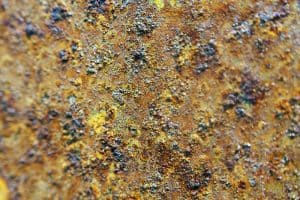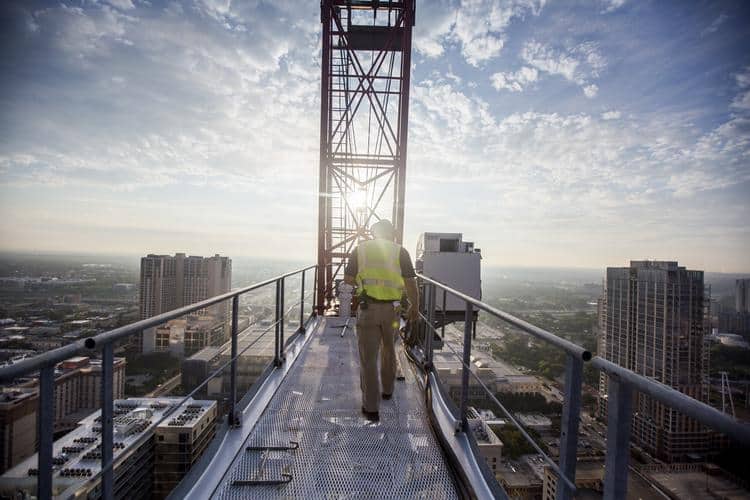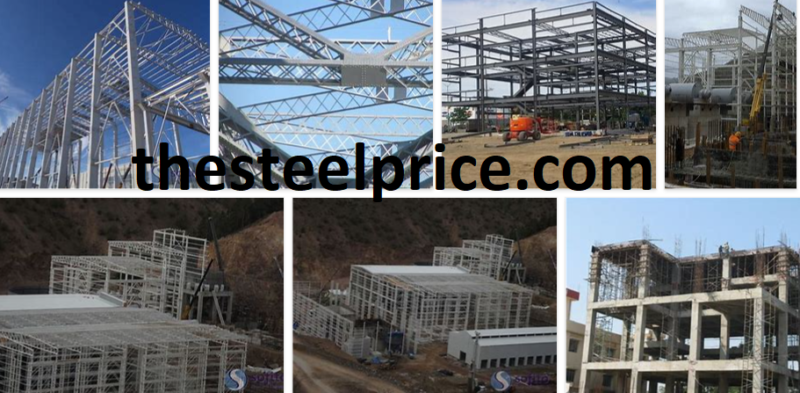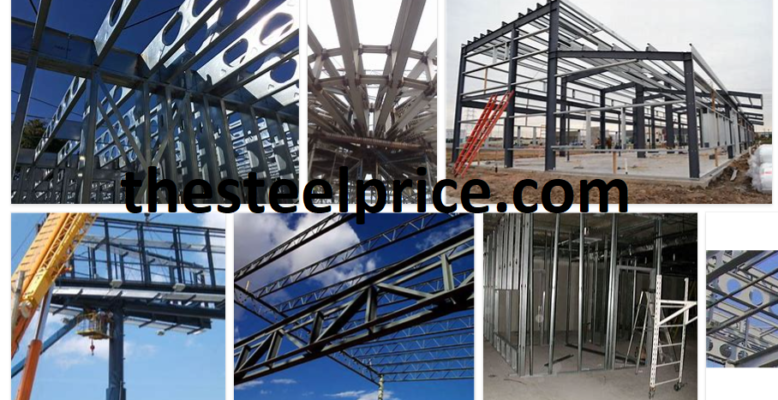Structural Steels S235, S275, S355, S420 and Properties
Structural steels, also known as light steels, are the most common class of iron and steel. Among the most commonly used grades (S235, S275, S355 and S420) are the use of steels, mechanical use and chemical components.
Structural Steel Applications
Structural steels are the most widely used steel material compared to qualified steels due to their sufficient qualities and low prices. Some of these structures use the reason for preference in many different industries. Every year, around 25% of some structural steel in the world is involved in the construction of buildings. Click to see the details of the steel construction. 2018 production of 37.3 million tons of steel, while Turkey, while Turkey’s steel exports in 2018 was 21.3 million tonnes.
Mechanical engineers are resistant to high durability or heavy loads.
Sometimes resistance to material wear is important while maintaining low weight. This is the case with forestry and mining equipment. It is then recommended to return to wear-resistant and high-strength steels such as Hardox and Strenx.
Corrosion Protection of Steel
Structural steels need an additional layer of protection against weather conditions. Easily undergo atmospheric corrosion, this steel is widely used as the coating of steel with anti-rust coating. For a permanent coating, the metal surface must be pre-treated (chemical etching or phosphating) and foreseen (blasting, washing or wiping). This process balances sandblasting and painting. The steel material passed through the blasting painting machines is purified from the surface by thin steel balls. Steel has a lifetime of at least 30 years against corrosion. In addition to this, a hot-dip galvanized coating method can also be used for a longer life than corrosion. Hot-dip galvanizing method is the second preferred method of corrosion protection for non-re-painting of the surface of the galvanized material.

Corrosion finds a way in spite of the paint and corrodes the steel.
Another durable way to protect structural steels against corrosion is hot-dip galvanizing. The quality and applicability of the zinc coating depends on the chemical composition of the steel – the percentage of phosphorus (P) and silicon (Si) is decisive:
Si + 2,5P <0.05% = 1st class quality
0.05% iSi + 2,5P≤0,15% = poor result (Sandelin range)
0.15% <Si + 2.5P <0.25% = 2nd class quality
0.25% <Si + 2.5P = poor result
In more severe conditions, for example in ports, it is recommended to use stainless steels instead.
Structural Steel Mechanical Properties
| Structural Steel Mechanical Properties | Tensile strength, Rm, MPa (N / mm2) | 0.2% yield strength, Rp0, 2min, (MPa) | Brinell hardness, HB max |
| S235 | 360 – 510 | 235 | 100 – 154 |
| S275 | 370 – 530 | 275 | 121 – 163 |
| S355 | 470 – 630 | 355 | 146 – 187 |
| S420 | 480 – 620 | 420 | 143 – 184 |
If you do not know the different mechanical properties of the materials, you can see the table. The structural steel name is the yield strength of 235 or 355. Indicates the maximum load in MPa which does not end with plastic deformation. Pressing above this value will permanently deform the metal. In the case of S235 steel, this value is 235 MPa. Everything below causes deformation, which means that your details can recover their original shape after lifting the load.
Tensile strength refers to the maximum load before the metal breaks. Continuing with the S235 example, this value is somewhere between 360… 510 MPa. Although it is significantly higher than the yield strength, you should consider the yield strength value when choosing the right material for your conditions. This is because exceeding the tensile strength means deterioration, while exceeding the yield strength results in deformation only.
The Structural Steel Properties table shows that the increase in the number of surface areas of higher quality means higher strength. S235 and S355 steels are the most popular among those presented here because they meet most needs. S275 will not find much use and may be more difficult to find. The S420 is suitable when looking for higher strength, but may not be readily available from every manufacturer. It can be found with special orders especially for manufacturers like Erdemir. It is not one of the commercial quality.
Hardness measurements of all structural steels are quite low. If necessary, these values can be improved by hardening. Of course, hardening will cause both cost and time loss. In this case, welded steel should be chosen according to the place to be used and should be preferred considering st 37 or st 52 difference.
st 37 or st 52 difference
St 37 and St 52 Steel Classification and Impact Resistance
You can find different letters before and after the numbers we explained earlier. Structural steels have a S, which represents structural steels as a preliminary structure. There are several alternatives for different applications (eg P for pressure vessel steels). P group steels are generally referred to as pressure vessel steels or boiler steels. They are high temperature resistant steels besides high strength values.
Ferritic steels change their behavior with temperature. They become more brittle at lower temperatures and a little more ductile at higher temperatures. These and similar conditions should be taken into account when needed. In winter, a structure that stands outside at -20 ° C can be brittle by a minor accident and cause a breakage of steel. Therefore, you should choose a steel that has the right impact resistance and is suitable for the right climatic conditions.
| Impact resistance | Temperature | ||
| Impact code | Test power | Temperature code | Test temperature |
| J | 27 J | R | +20 °C |
| K | 40 J | 0 | 0 °C |
| L | 60 J | 2 | -20 °C |
S235JR and S235L2 behave differently when faced with pulses. J indicates that it can be hit with a maximum of 27 Joules, K 40 Joules and L 60 Joules. R means that the minimum temperature for this capacity is at room temperature (20 ° C), 0 is 0 ° C and 2 is -20 ° C. Therefore, the S235JR can receive only 27 Joules at room temperature, while the S235L2 can receive 60 Joules at -20 ° C. The following video about the Charpy impact test is well illustrated.
When you encounter a steel with a name such as S235J0 + N, you are normalizing. Normalization is a heat treatment method used on steel to thin the crystal structure and provide a more uniform grain size distribution. Eliminates internal stresses and stresses. This increases the machinability, durability and ductility of the steel without sacrificing hardness and strength.
Although there are some other additions you may see, we limit ourselves to the most common. The last one is MC. S355MC steel is thermomechanically processed, combining strength with features suitable for cold forming such as bending.
S235, S275, S355, S420 Chemical composition
composition |
Chemical content% quantity | |||
| S235 | S275 | S355 | S420 | |
| Manganese (Mn) max | 1,60 | 1,60 | 1,60 | 1,60 |
| Silicon (Si) max | 0.05 | 0.05 | 0.05 | 0.5 |
| Carbon (C) max | 0.22 | 0.25 | 0.23 | 0.12 |
| Phosphorus(P) max | 0.05 | 0.04 | 0.05 | 0.025 |
| Sulfur (S) max | 0.05 | 0.05 | 0.05 | 0.015 |
The exact chemical composition will vary depending upon the required strength. For example, stronger structural steel (eg S355W), which should be weather resistant, will have a slightly different chemistry than the standard S355.
Even if chemistry is almost the same, the combination of different production processes (rolling, heat treatment and cooling) determines the ultimate strength. For example, the more steel is rolled, the stronger it becomes.
Structural steels are better known, for example, as steel grade S355. However, each structural steel mentioned in this article has the EN equivalent. We will reveal the most common:
S235JR – EN 1.0038
S235J2 – EN 1.0117
S275JR – EN 1.0044
S275J2 – EN 1.0145
S355JR – EN 1.0045
S355J0 – EN 1.0553
S355J2 – EN 1.0577
S420M – EN 1.8827
Which Steel Quality Should You Choose?
It really depends on your needs. Are you just going to laser-cut some metal parts? Do you want to bend the cut steel parts later? What kind of coating is required for corrosion? What kind of load does it carry? Where is it used?
Simply put, a better material costs more. In assemblies, it is best to keep different amounts of material to a minimum because otherwise any installation costs are added to the final price.
The most common method for steel selection is yield strength. Your needs can be calculated using structural analysis. An easy way to do this is to use the simulation options available in most 3D CAD programs. At least the critical points must still be checked by manual calculation to ensure that the order of magnitude is correct.
Not everything comes in all sizes and thickness. And everything is out of stock. Cold rolled sheets You get hot rolled sheets up to 3 mm. Cold rolled ones have the advantage of a more uniform structure. The S355MC provides uniform construction and good bending properties if your structure requires steels thicker than 3 mm.
If you ask the S235, you may be wondering why 2 manufacturers offer ”the same material” at very different prices. Someone may be offering you more quality. Make sure you know exactly what you’re getting by asking exactly which metal is being used. If you need quality, ask for details, chemical analysis. If you need a low price that is what we are all looking for 🙂 investigate or ask us.



